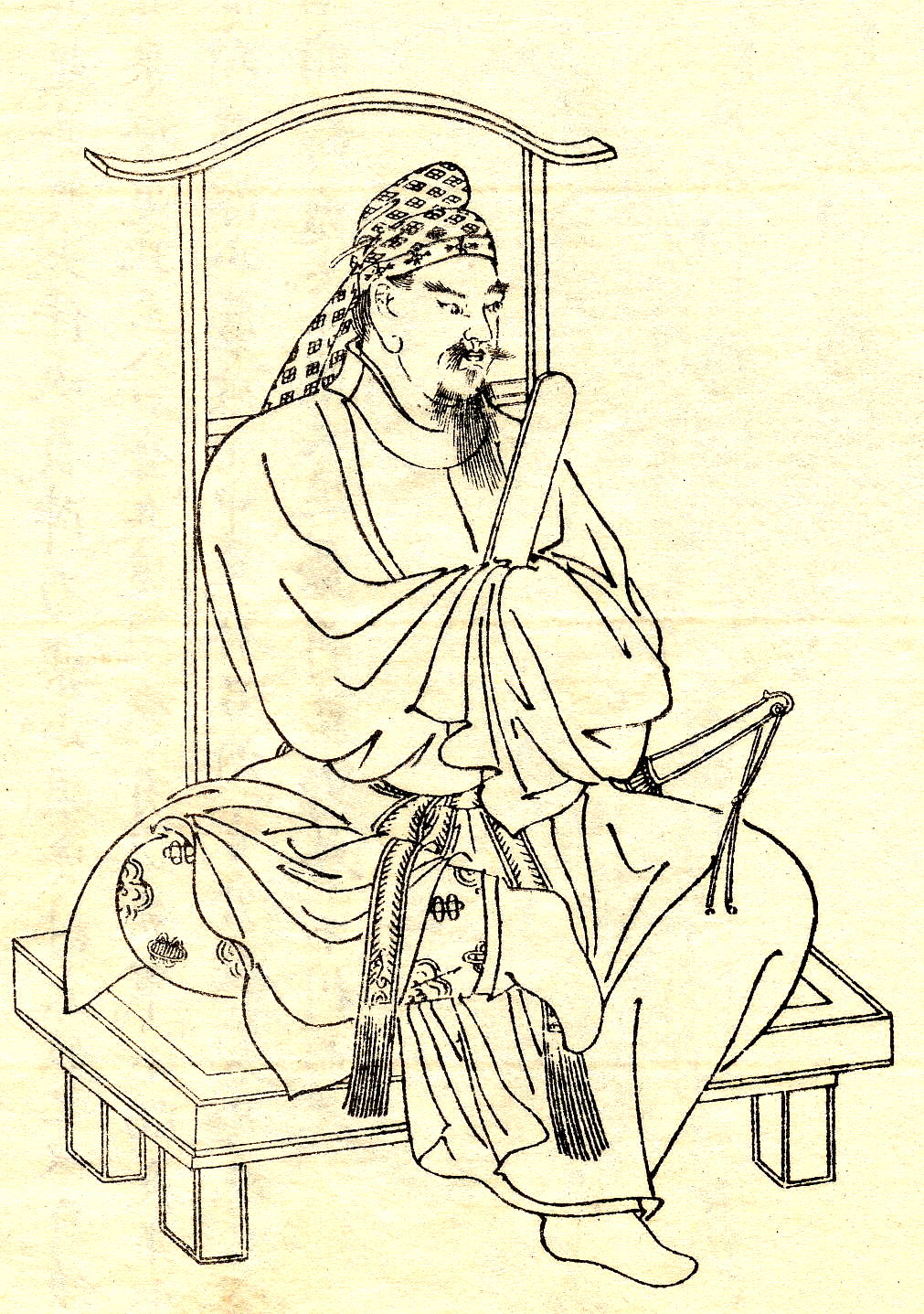|
Fujiwara No Kamatari
, also known as , was a Japanese politician and aristocrat who, together with Prince Naka no Ōe (later Emperor Tenji), carried out the Taika Reform. He was the founder of the Fujiwara clan, the most powerful aristocratic family in Japan during the Nara and Heian periods. He, along with the Mononobe clan, was a supporter of Shinto and fought the introduction of Buddhism to Japan. The Soga clan, defenders of Buddhism in the Asuka period, defeated Kamatari and the Mononobe clan, and Buddhism became the dominant religion of the Imperial Court. Kamatari was appointed Inner Minister,Nussbaum, Louis-Frédéric. (2005). "Fujiwara no Tadahira" in ; Brinkley, Frank ''et al.'' (1915). and, along with Prince Naka no Ōe, later Emperor Tenji (626–672), launched the Taika Reform of 645, which centralized and strengthened the central government. Just before his death, he received the surname ''Fujiwara'' and the rank from Emperor Tenji, thus establishing the Fujiwara clan. Biography ... [...More Info...] [...Related Items...] OR: [Wikipedia] [Google] [Baidu] [Amazon] |
Fujiwara No Fuhito
Fujiwara no Fuhito (藤原 不比等: 659 – 13 September 720) was a powerful member of the imperial court of Japan during the Asuka and Nara periods. Second son of Fujiwara no Kamatari (or, according to one theory, of Emperor Tenji), he had sons by two women, and those sons were the founders of the four principal lineages of the Fujiwara clan: the South, North, Ceremonial, and Capital lineages. Also, he had four daughters by two other women, three by Kamohime, one by Tachibana no Michiyo. One daughter by Kamohime became Emperor Monmu's wife Miyako, who in turn gave birth to Emperor Shōmu. The daughter by Michiyo became the empress of his grandson Shōmu, Empress Kōmyō. During the reign of Emperor Monmu, the government ordered that only the descendants of Fuhito could bear the Fujiwara surname and could be appointed in the Office of Dajokan, the center of administratives. Biography Fuhito was 13 years old when the Jinshin incident occurred. His father Kamatari had ... [...More Info...] [...Related Items...] OR: [Wikipedia] [Google] [Baidu] [Amazon] |
Naidaijin
The , literally meaning "Inner Minister", was an ancient office in the Japanese Imperial Court. Its role, rank and authority varied throughout the pre- Meiji period of Japanese history, but in general remained as a significant post under the Taihō Code.Titsingh, Isaac. (1834). ''Annales des empereurs du japon'', p. 425. History Pre-Meiji period The office of ''Naidaijin'' predated the Taihō Code of 701. Fujiwara no Kamatari was the first person appointed to the post in 669. After the appointment of Fujiwara no Michitaka in 989, the office became permanently established, ranking just below that of ''Udaijin'' ("Right Minister") and ''Sadaijin'' ("Left Minister"). Meiji period and after The office developed a different character in the Meiji period. In 1885, the title was reconfigured to mean the Lord Keeper of the Privy Seal of Japan in the Imperial Court. In that year, the office of prime minister or chief minister of the initial restoration government was the ''Daijō-d ... [...More Info...] [...Related Items...] OR: [Wikipedia] [Google] [Baidu] [Amazon] |
Konoe Family
is a Japanese aristocratic family. Papinot, Jacques Edmond Joseph. (1906). ''Dictionnaire d’histoire et de géographie du Japon''; Papinot, (2003)"Konoe," ''Nobiliare du Japon'', p. 24 retrieved 2013-8-13. The family is a branch of Hokke and, by extension, a main branch of the Fujiwara clan. Nussbaum, Louis-Frédéric. (2005)"Go-sekke"in ''Japan Encyclopedia'', p. 260. History The Konoe claim descent from Konoe Iezane (1179–1242). The origin of the family name was the residence of Iezane's grandfather Konoe Motozane, which was located on a road in Kyoto named "Konoe-Ōji" (近衛大道). Despite Konoe at first being the senior line of the Fujiwara clan, the clan was eventually split up into Five regent houses during the Kamakura period, with each of the five families having the right to assume the regency. During the following Nanboku-chō period, a succession dispute of Konoe emerged, between Tsunetada and his cousin Mototsugu – they served in rival courts, the So ... [...More Info...] [...Related Items...] OR: [Wikipedia] [Google] [Baidu] [Amazon] |
Ise Shrine
The , located in Ise, Mie Prefecture of Japan, is a Shinto shrine dedicated to the solar goddess Amaterasu Ōmikami and the grain goddess Toyouke-hime (Toyouke Omikami). Also known simply as , Ise Shrine is a shrine complex composed of many Shinto shrines centered on two main shrines, and . The Inner Shrine, Naikū (also officially known as "Kōtai Jingū"), is dedicated to the worship of Amaterasu and is located in the town of Uji-tachi, south of central Ise, where she is believed to dwell. The shrine buildings are made of solid cypress wood and use no nails but instead joined wood. The Outer Shrine, ''Gekū'' (also officially known as "Toyouke Daijingū"), is located about six kilometers from Naikū and dedicated to Toyouke-Ōmikami, the god of agriculture, rice harvest and industry. Besides Naikū and Gekū, there are an additional 123 Shinto shrines in Ise City and the surrounding areas, 91 of them connected to Naikū and 32 to Gekū. Purportedly the home of the Sacred M ... [...More Info...] [...Related Items...] OR: [Wikipedia] [Google] [Baidu] [Amazon] |


